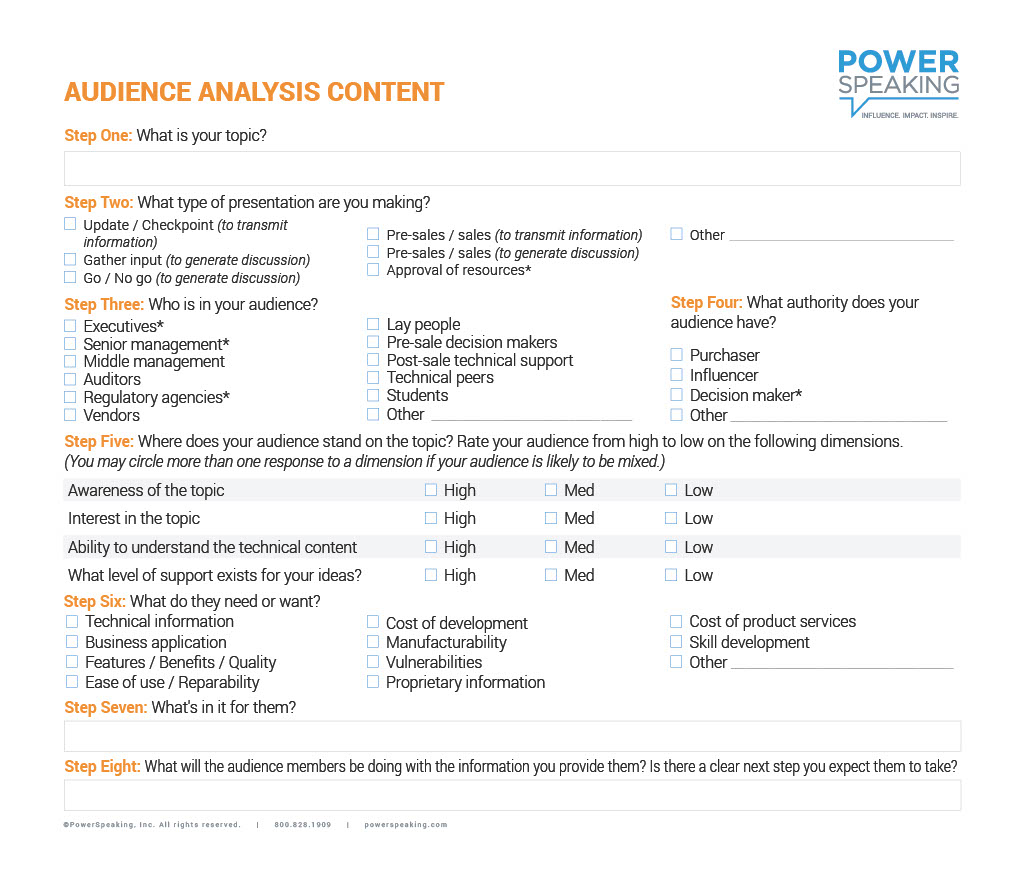
“The single biggest problem in communication is the illusion that it has taken place.”— George Bernard Shaw, dramatist & critic
Today we text, instant message, email, Slack, ping, present, Zoom, and occasionally meet in person, but how often do we really communicate—and do it well?
Yes, the technical skills you’ve worked so hard to hone are critical to your success, but more and more, companies are realizing that powerful communication skills are just as important.
Consider some recent research . . .
A 2021 report by the World Economic Forum, which used among other research sources McKinsey & Company’s Global Institute data, ranked strong communication skills among those that will “help citizens thrive in the future of work.”
In a global survey of over 400 executives, the IBM Institute for Business Value learned that leaders see certain skills and behaviors as the most critical in the workplace today, and in the future. “Ability to communicate effectively in the business environment” was among the top four skills (the other three were: Willingness to be flexible, agile, and adaptable to change; Time management skills and ability to prioritize; and Ability to work effectively in team environments).
Because PowerSpeaking, Inc. is in the communication training business, we’ve seen up close and personal how, when people sharpen their communication skills, powerful things happen:
- They become more confident
- They build stronger, more productive working relationships
- They help drive better and faster decisions
- They are seen by management as VIP employees (which means they tend to advance in their careers more quickly)
- And they contribute mightily to the company’s success.
Based on our experience and ongoing research by others, we see these six communication skills as critical to you, and your organization’s success . . .
Contents
Tip 2 Choosing and Using Your Mode of Communication Well
Tip 4 Being an Active Listener
Tip 1
Knowing Your Audience
The best communicators are audience-centric. They know that in any communication exchange, understanding their audience’s perspectives, challenges, and concerns allows them to be more effective communicators.
Whether you need to give a presentation, send a critical email to a team, or talk one-on-one with a coworker, the first thing to consider is who you’re talking to.
Here are some questions that will help you “walk in their shoes” . . .
What is your audiences’ psychological state of mind/what are they coming off of (another meeting, travel, lunch, different time zones, juggling household logistics, etc.)?
What is top of mind for the audience you’re going to address?
What kinds of questions might they have?
Will they need you to set the context or educate them about the more complex aspects of the information you’re presenting?
What are their hot points?
Do you anticipate areas of resistance?
Are there language or cultural considerations?
And perhaps most important, how will your data, proposal, or message benefit or impact them?
The truth is, stepping away from our specialized expertise and self-interest to become more service-oriented communicators is a fundamental paradigm shift for many of us. But it’s so worth the effort.
Here are just a few benefits of analyzing and focusing on your audience . . .
- They’re more likely to listen to, understand, and relate to you and your message.
- They’ll appreciate that you care enough to put yourself in their shoes.
- You’re apt to be less anxious as a speaker when you adopt the mindset that you’re there to be of service by clarifying information, educating, or helping them make a decision or take action.
So, how do you analyze an audience? There are two steps: gather information, then spend the time to think about what you learn and how best to apply it to what you want to communicate.
We give workshop participants a handy tool for thinking about audience analysis . . .

Once you have a clear picture of your audience in mind, think carefully about how best to convey your message and engage with them.
Tip 2
Choosing and Using Your Mode of Communication Well
Back in 1964, on the eve of the computer and technology revolution, mass-media theorist Marshall McLuhan coined the phrase, “the medium is the message.” What he meant was, the form or vehicle you use largely determines the ways in which the message will be perceived. McLuhan argued that modern electronic communications (back then it included radio, television, films, and early computers) would have far-reaching societal impacts, to the point where they affect the way we experience each other and the world.
Fast forward 50 years to a workplace where there are many more modes of communication to choose from, and there’s still truth in McLuhan’s theory. The method you choose to communicate has meaning in itself; and how well you use it (or not) can have a profound effect on people.
Let’s say you’re having an ongoing conflict with a coworker and you want to try to work through it. Which vehicle would you use? What “message” would each of those communication channels send? Suggestion: When it comes to conflict, anything other than a face-to-face discussion or a phone call risks feeling impersonal, and increases the chance of misunderstandings.
These days, with so many communication modes to choose from, it’s critical that you become skilled in and know the pros and cons of each.
When you communicate, ask yourself questions like these . . .
What vehicle is going to be most effective and efficient?
How might generational preferences/behavior influence the sender and/or receiver’s experience?
Which will be best for highly detailed or sensitive information?
Which will help decrease the possibility of misinterpretation?
Which will be most helpful to the audience?
Which is more likely to build relationships vs. harm them?
Which will help achieve the goal?
Tip 3
Being Clear and Concise
Nine times out of ten when I’m running a communication skills workshop and ask people what they need to work on, they’ll say, “I need to be more concise; I tend to go into the weeds too much.”
Why is giving a ton of detail a problem? Because your key point becomes unclear. And in the business world, unclear communication causes countless projects to go awry, great ideas to be missed, and working relationships to suffer.
Why do so many of us struggle with being clear and brief? One key reason is that, ironically, it’s harder to be succinct than verbose. It takes more thought to synthesize and distill information than it does to allow your thoughts (and communication) to meander.
Another reason people spend too much time in the weeds is nerves, especially if they’re presenting for the first time or are feeling intimidated by audience questions or disagreements.
One other common reason for overly long, foggy communication harks back to the first skill, audience analysis: people just don’t focus on who they’re talking to and what that audience needs or wants to know.
One place where it’s absolutely critical to be brief and clear is when you’re presenting to leaders and decision makers. The sage advice the leaders give in this one-minute video clip about getting to the point applies not only to executive presentations, but also to team meetings and other scenarios . . .
I like to use email as a classic example of the power of clear, brief communication. As people repeatedly scan the subject lines of dozens, if not hundreds of emails each day, which ones are they most likely to read? How often does the subject line tell them clearly what the email is about, its relevance to them, its urgency, and whether they’re being asked to do something? Not often enough, right? And even when they do open and read emails, how often does the sender get straight to the point, with no unnecessary information?
For example, if your request is urgent and you need information or a decision in a hurry, make it clear in your subject line: “URGENT: Need decision on budget by tomorrow.” This kind of clarity and brevity is a generous act, and the recipients will appreciate it. For more excellent pointers on effectively using email, check out this list from Inc.: 25 Tips for Perfecting Your Email Etiquette.
So, if you want to get and keep people’s attention, and get them to do what you need them to do, you need to flex your clarity and brevity muscles.
Tip 4
Being an Active Listener
We have two ears and one mouth so we can listen twice as much as we speak.—
Greek philosopher Epectetus
I talked earlier about how our natural self-interest sometimes prevents us from focusing on our audience. It often prevents us from being good listeners, too. And that makes productive, relationship-building communication nearly impossible.
To be fair, I think listening is challenging for people when they’re trying to communicate because of anxiety—especially if it’s a high-stakes environment. It can be overwhelming to try to listen and take in information, while wanting to get your point across and influence others. And the anxiety can be compounded if you’re facilitating an interactive discussion with a large or dynamic group of people.
It is important to realize that you are not expected to memorize what people say/share. Instead, focus on listening for themes, trends, concerns, big-picture concepts you are hearing, as these are more manageable to summarize, address, and paraphrase when needed.
Becoming a genuine, active listener can be learned—with intention and practice. Check out our “4 Things the Best Listeners Do” blog post for actions you can take. Other skills you can employ to become a more active listener are paraphrasing to gain clarity, being aware of nonverbal cues, and using facilitation skills in a group environment.
Tip 5
Being Authentic and Courageous
These may be more characteristics than skills, but to cultivate them is crucial to being a successful communicator who makes a difference in the workplace—and beyond.
When it comes to communicating in today’s workplace (and world), we see authenticity and courage as one “skill” because they’re so interdependent. It’s hard to be authentic without a little courage; and courage almost always is driven by a need to be authentic.
Most people have pretty good radar for spotting insincerity. But when they sense you’re being authentic, they’re more apt to listen to you, be open to what you have to say, and be willing to act on what you’re asking of them.
Courageous communication can mean a lot of things: being willing to ask questions and speak up when you have a concern; encouraging an employee or colleague to do the same; admitting when you make a mistake; and being willing to identify the elephant in the room; and more.
Authenticity and this kind of courage come from an emotional intelligence that makes all the difference in your ability to: influence others; forge and nurture healthy and productive relationships; and propel your personal brand and career trajectory.
The more people there are in an organization who demonstrate these characteristics, the more successful everyone will be. And that is especially important, for example, as we strive to make our workplaces more diverse, inclusive, and equitable.
I love the way Lynne Zaledonis, marketing executive at Salesforce, sees the importance and impact of being authentic in the workplace . . .
Tip 6
Having Empathy
While I’m ending the list with “empathy,” in some ways it’s at the heart of what makes great communicators great. I love how Peter Bregman, executive coach and author, describes the importance of empathetic leadership in a Harvard Business Review article titled, “Productive Conversations Take Real Empathy”:
“Empathy works. It’s not only human and caring; it’s practical . . . Our relationships truly are our most important assets. I don’t mean this in an our-employees-are-our-most-important-asset kind of way, which is always asserted and, unfortunately, rarely practiced. I mean that we are all far more productive in the context of a successful relationship than a strained one. And the quality of our relationships determines the quality of our lives and our leadership.”
I’d say the same is true for all of us, no matter our position in the organization. Authentic, collaborative communication can only take place if we are willing to strive for understanding when we communicate, rather than jockeying for position or trying to be the one who’s “right.” And that takes genuine empathy.
Next time you have an in-depth conversation with a coworker, particularly if it’s a sensitive one, try to first understand their perspective, what information or challenges might be driving it, and show that you empathize. Then, you’re ready to start working together toward the best result.
Final Thoughts . . .
I hope these insights and tips have helped to inspire you to improve your communication skills.
The next step is to start taking action. Assess your strengths and dig into those superpowers every chance you get; and identify one stretch opportunity to begin applying/experimenting with over the next 30 days. To measure your success in applying the strategy you want to practice and improve on, record yourself then watch it; and ask a trusted colleague, mentor, or coach for specific feedback on where you can continue to improve.
I’d love to hear about which communication skill you choose and what you’re doing to improve it! Share your experience in the Comments section below.






.png)


